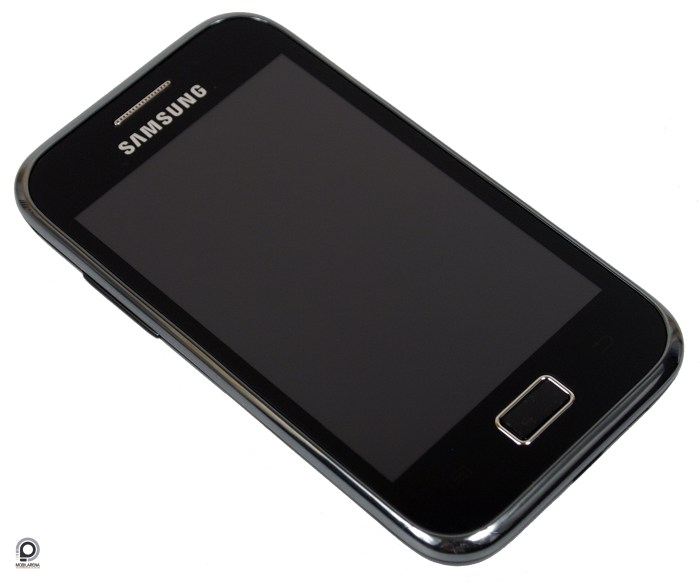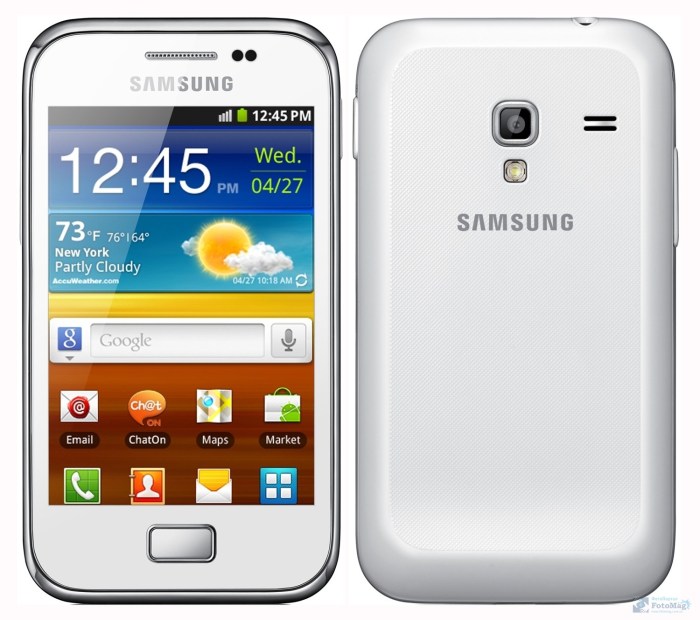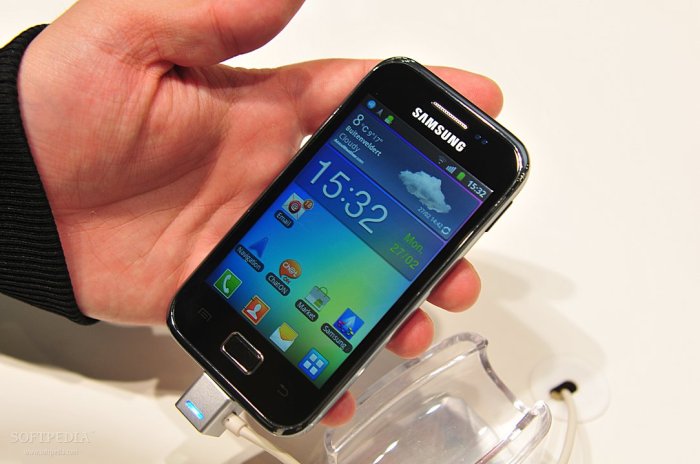Samsung Galaxy Ace Plus Specification
Samsung Galaxy Ace Plus: A Retrospective
Samsung galaxy ace plus specification – The Samsung Galaxy Ace Plus, a budget-friendly Android smartphone released in 2012, carved a niche for itself in the entry-level market. This article delves into its specifications, features, and overall user experience, providing a comprehensive overview of this now-vintage device.
Device Overview
The Samsung Galaxy Ace Plus was a modestly-specced smartphone aimed at consumers seeking an affordable Android experience. Launched in 2012, it competed with other budget-friendly handsets of the time, emphasizing accessibility and essential features over high-end performance. Key differentiating features at launch included its relatively compact design and a user-friendly interface, catering to a broader audience accustomed to simpler mobile phones.
Technical Specifications
The Galaxy Ace Plus’s technical specifications provided a solid foundation for its target market. The following table summarizes its core hardware components:
| Processor | RAM | Storage | Screen Size |
|---|---|---|---|
| 800 MHz | 512 MB | 3 GB | 3.65 inches |
The device shipped with Android 2.3 (Gingerbread) as its operating system. Network connectivity options included:
- GSM/GPRS/EDGE
- UMTS/HSDPA
Camera Capabilities

Source: mobilarena.hu
The Galaxy Ace Plus featured a modest camera system for its time. The primary camera offered a resolution typically found in budget smartphones of that era.
Its video recording capabilities were limited, offering standard definition recording at a basic frame rate. Compared to competitors like the HTC Desire V or the Sony Xperia Tipo, the camera performance was on par with its price point, adequate for casual snapshots but not suitable for professional photography or videography.
Physical Design and Dimensions

Source: android-help.ru
The Samsung Galaxy Ace Plus was designed for comfortable one-handed use, reflecting its positioning as a compact and accessible device.
While precise dimensions and weight aren’t readily available from official sources, it was a relatively lightweight and slim device constructed primarily of plastic. It was offered in various colors, such as black and white, to cater to user preferences. The overall design was simple and functional, prioritizing usability over extravagant aesthetics.
Battery Life and Performance
The battery capacity of the Samsung Galaxy Ace Plus was modest for its time, sufficient for a day’s use with moderate usage. Heavy use, such as gaming or continuous video streaming, would likely result in quicker battery drain. Compared to high-end smartphones of the era with larger batteries, the Galaxy Ace Plus offered noticeably shorter battery life. Everyday tasks like calling, texting, and light browsing were easily handled, however more demanding applications might lead to some performance limitations.
Connectivity and Sensors

Source: softpedia.com
The Galaxy Ace Plus offered standard connectivity options for its time, including:
- Wi-Fi
- Bluetooth
- USB 2.0
In terms of sensors, the device likely included a basic set, such as an accelerometer and proximity sensor, essential for standard smartphone functionality.
User Interface and Software, Samsung galaxy ace plus specification
The Galaxy Ace Plus ran on Samsung’s TouchWiz UI layered over Android 2.3 Gingerbread. The UI was characterized by its simplified layout and ease of navigation, aligning with the phone’s overall accessibility focus. Pre-installed applications included standard Samsung apps like a music player, gallery, and internet browser, along with a selection of Google services.
Compared to other Samsung devices of the era, the software experience was generally similar, although the hardware limitations might have resulted in slightly slower performance compared to higher-end models.
A Typical User Scenario
Imagine Sarah, a college student using the Galaxy Ace Plus for daily communication and basic tasks. She uses it for texting, calling friends, and checking emails. The phone’s compact size is convenient for carrying in her bag. While the camera is sufficient for capturing quick photos, she wouldn’t use it for anything more than casual snapshots. Battery life lasts through a typical day, but heavier use, such as extended social media browsing or watching videos, requires more frequent charging.
The device handles everyday tasks efficiently, although more demanding apps might exhibit some lag. Overall, the phone meets her basic needs, offering a reliable and accessible communication tool without the complexities and costs of a flagship device.
The Samsung Galaxy Ace Plus, while a budget-friendly device of its time, boasted a modest specification sheet. However, if you’re looking for a significant upgrade in terms of features and performance, consider the Samsung Galaxy A8; you can find its full specification and price in India here: samsung galaxy a8 full specification and price in india. Returning to the Ace Plus, its compact size and user-friendly interface remain notable aspects for some users.
FAQ Overview: Samsung Galaxy Ace Plus Specification
Was the Samsung Galaxy Ace Plus popular?
Its popularity was moderate, primarily appealing to budget-conscious consumers seeking basic smartphone features.
Did the Samsung Galaxy Ace Plus receive any software updates after launch?
While it likely received some security updates, major OS updates were limited due to its budget nature and lifecycle.
What was the biggest drawback of the Samsung Galaxy Ace Plus?
Limited processing power and storage capacity compared to contemporary mid-range and flagship devices were significant drawbacks.





















